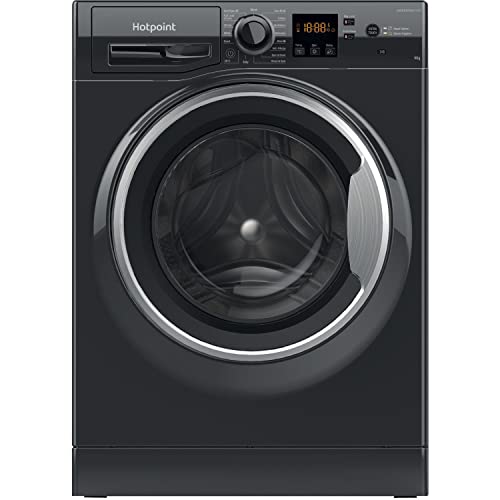Washer Dryer Combos
 Combination washer dryers bring the convenience of a washer and a clothes dryer together into one appliance. They do the same thing as standalone appliances, but with half the footprint.
Combination washer dryers bring the convenience of a washer and a clothes dryer together into one appliance. They do the same thing as standalone appliances, but with half the footprint.
These units are great for small homes and apartments. Their smaller dryer capacity is ideal for one to two person households, and they can save homeowners time and energy by removing the necessity to transfer wet laundry from the washer to the dryer.
Space Saver Space
Washer dryer combos integrate two appliances in one which saves space in your laundry room. They are also great for smaller living spaces. These machines are more gentle on clothes than front loading washing machines and can be more energy efficient than separate washers. The majority of combo washers and dryers come with a range of programs that are geared towards specific requirements for cleaning like delicates high efficiency, timed drying.
They’re great for condominiums, apartments and other smaller houses, as they can easily fit into small storage spaces or washing Machines washer laundry rooms. Since they don’t require vents, these units are easy to install anywhere there’s electricity and water access. Certain all-in-one washers can even be designed to be portable and allow you to carry them with you when you move or relocate.
They are smaller than separate dryers and washers. They can be tucked away in a corner, or under a countertop depending on the model and the brand. Some models are vented, while others are ventless and can be placed in any room without a vent.
Another benefit of washer dryer combos is that they save you lots of time and effort. You can save time and effort by not having to transfer your laundry between the dryer and the washer. This is particularly useful if you are unable to move around or work for long periods of time and arrive home late at night.
Modern washer dryer combos have shatter away the misconception that they take a long time for clothes to dry. They are able to dry in just a few minutes. They can be used in 45 minutes or less, making them an excellent choice for busy families. They are also ideal for people who live on tank water and care about the environment, as they don’t require the extra water and energy that dryers and washing machines require to function.
Savings time
Combination washer and dryers are an ideal solution for those who live in small apartments, condos or homes, or simply don’t have the space to accommodate two large appliances. They combine a front-loading washing machine and Washing Machines Washer a clothes dryer into one unit that is about half the size of an average washer and dryer. They are smaller than standalone appliances, yet they provide similar washing and drying results.
These products are also designed for water and energy efficiency. This reduces utility costs and also contributes to sustainability. Some units come with features like sensor drying that can automatically adjust cycle settings depending on fabric type and soil levels. This can help optimize the energy consumption.
Washer dryer combos also are very easy to use. They come with simple controls and an easy-to-use design making them easy to set up and use. Many models come with a timer that can be set to start the cycle at a specific time, so you can wash and dry your clothes according to a schedule that is suited to your needs. You can even set your washer to start before you head out for work in the morning, and you’ll be able to arrive home to freshly washed and dried clothes.
The washer dryer combos have the advantage of being able to use them in any location since they don’t require external venting unlike conventional standalone appliances. This allows you to install the appliance in different locations and spaces, such as a closet or under a counter. It’s also less expensive than installing an air-tight drying system in your home.
One disadvantage of washer dryer combos is that they may take longer than standalone appliances to complete an entire cycle. A typical cycle can take between three and six hours. This is a long amount of time to finish an entire load. This can be a problem when you have a hectic schedule or live in a cold environment and are unable to dry your clothes.
A second downside is that washer dryer combinations tend to use more water in the drying phase. This can be a concern for people who are dependent on tank water or are concerned about their water usage and impact on the environment.
Saves Energy
A washer-dryer combo is a single laundry appliance that combines the functions of a front load washing machines washer (peatix.com website) machine and dryer into a single unit. They are able to perform all that separate appliances can do however, with a smaller footprint. This is a huge advantage for smaller living spaces.
The majority of washer dryers are energy-efficient. They offer features like sensor drying, which detects moisture levels and adjusts the drying time according to the moisture level. This can help you save money, energy and also reduce the environmental impact.
The best way to check the way a particular combination dryer is performing with regard to energy consumption is to refer to the ENERGY STAR rating on its Energy Factor label. This can be used to evaluate the performance of a product against similar ones and make sure it’s suitable for your home, based on water and electricity requirements.
While the washer side of a washer dryer combo operates in the exact same way as a conventional front load washer, the drying function is where things become interesting. The majority of dryers are condenser dryers. This means that they do not use heat to dry clothes. Instead they cool the lint inside by using fins.
This could take up to 6.5 hrs for some models and consumes a lot of power. Therefore, washer dryer combos are typically a bit more expensive to run than separate appliances.
A decent quality combination should cost about the same as a standalone washer or dryer however, it’s worth keeping in mind that you’re buying and using two appliances within one machine. This increases the overall cost and complexity and could mean they’re less reliable when something goes wrong. This complexity could also increase the cost of repair, particularly when the appliance is in need of replacement.
Savings on Money
Washer dryer combos can be a great option for homes with a limited space, as they combine washer and dryer in one unit. These are also great for those who don’t need to make frequent trips to the laundry. They’re inexpensive, simple to use, and offer a good level of performance for the money.
Since both a washer and a dryer are both in the same machine, they consume less energy than two separate appliances. This is particularly true for vented washer dryer combos that feature an air-cooled heat exchanger which reduces energy consumption. In fact, most washer dryer combos are more efficient than standalone models, and many of them can save a family up to $100 each year on laundry utilities [source: Consumer Reports].
Another way that washer dryer combo units save money is not requiring you to switch between dry cycles and washes. A washer dryer combination will start drying your clothes automatically as soon as the wash cycle is complete. This helps to avoid the musty mildew odors that can form if wet clothes are kept in the dryer too long. Some models let you delay the cycle of drying, so you can load the dryer/washer early in the morning, and come home to a dry load of laundry.
There are some disadvantages to using a combination washer/dryer. The biggest disadvantage is that these machines are smaller than standalone washing machines. This means you won’t be able to wash and dry as large a load of laundry in the same cycle as you could with a conventional machine. Some washer/dryer combo machines tend to take longer to dry loads than standalone dryers.
However, modern washer/dryer combo units are designed to address these problems. Ventless dryers make use of water-based cooling systems and vented models employ an air-cooled heat transferr. Both systems can cut down on the time it takes to dry a load.
